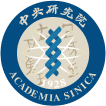TIGP (BIO)—DNA-protein crosslinks (DPCs) in cancer
- 2025-02-20 (Thu.), 14:00 PM
- 統計所B1演講廳,實體演講,不開放線上視訊
- 英文演講|講者簡介請見下方附件
- Prof. Hao-Yi (Ricky) Li (李豪嶧 助理教授)
- 國立中山大學 精準醫學研究所
Abstract
DPC is a relatively novel type of DNA lesion, characterized by proteins covalently linked to DNA. Unrepaired DPCs induce replication stress, which leads to double-stranded breaks (DSBs) that are highly toxic to cells. The mechanisms of DPC repair are relatively unknow compared to other DNA repair pathways. Notably, accumulating reports highlight the importance to understanding the mechanisms for resolving DNA-protein crosslinks (DPCs) induced by chemotherapeutic drugs. Several cancer therapeutics induce DNA-protein crosslinks (DPCs), including Camptothecin (TOP1-DPCs), Etoposide (TOP2-DPCs), 5-azadC (DNMT1-DPCs), and irradiation/platinum-based drugs, which trigger global DPC formation. Understanding DPC repair is crucial for clinical outcomes, yet investigating its mechanisms is challenging due to the essential role of SPRTN and technical limitations. To address this, we developed the Purification of x-linked Proteins (PxP) method, enabling the study of drug-induced DPC repair in cells. Using PxP, we detected TOP1-DPCs and histone-DPCs following Camptothecin and formaldehyde treatment, respectively. Furthermore, we tracked the repair kinetics of 5-azadC-induced DNMT1-DPCs, demonstrating that SUMOylation initiates repair, followed by RNF4-mediated ubiquitylation. The modified DNMT1-DPCs are subsequently degraded via the p97-proteasome pathway or cleaved by SPRTN, with the resulting fragments further processed by p97 and the proteasome. The PxP assay offers a valuable tool for investigating DPC repair and its implications for cancer therapy.





